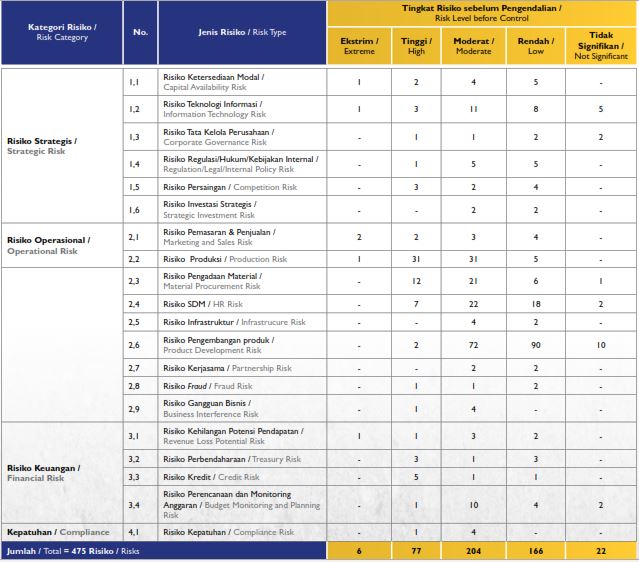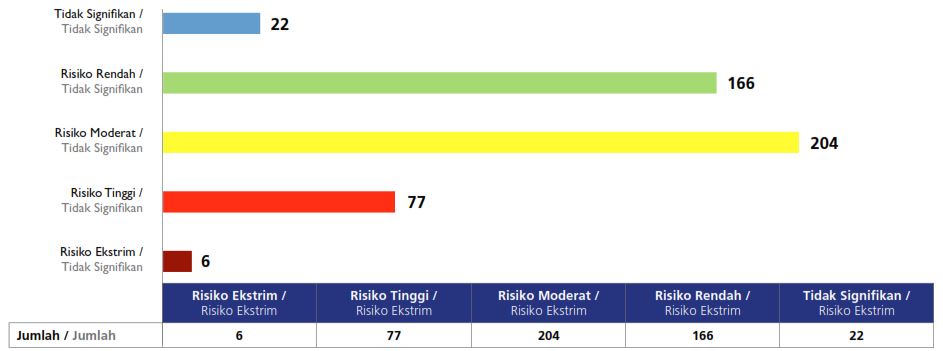GOOD CORPORATE GOVERNANCE
Good Corporate Governance (GCG) of PT. Pindad (Persero) has basic principles as follows: transparency, accountability, responsibility, independency and fairness to improve the performance and image of the company.
The implementation of GCG in PT Pindad (Persero) is one of the ways to reach the vision, mission and objectives of the company effectively and faster so that the stakeholders can trust the company that it is well managed to reach the proper and high value result. The implementation of GCG also motivates the professional, transparent and efficient company management through a more effective risk and resource management, encourages each leader to take decision and implement every decision by having high moral value and obeying the valid regulations, builds awareness toward the social responsibility to stakeholders as well as prevents the deviation in the business process.
The explanation of the GCG principles are written in the company ethic which contains: commitment to stakeholders, company values, conflict of interest, gift giving and donation, Health Safety and Environmental (K3LH) awareness, work opportunity and promotion, integrity of financial report, company information protection, company assets protection, social politic activities, ethic to stakeholders, and mechanism of reporting and asserting of violation as well as sanction.
Assessment of the GCG implementation is conducted both by the external party (consultant) and the internal party of the company. The assessment is focused on the factual performance of the GCG implementation in the company. It is conducted by using instruments in the form of indicators explaining in qualitative parameters and equipped with conformance testing.
Pindad has carried out the assessment of GCG implementation since 2004. The first assessment was carried out on September 7th, 2004 to December 3rd, 2004 by the Finance and Development Supervisory Agency (BPKP) of West Java Province with a score of 68.12% and 22 recommendations with the category “Fair”. As stated in the 2017 RKAP, GCG assessment activities for the 2016 fiscal year were carried out independently (self-assessment). This activity was carried out properly by the GCG department in December 2017. According to the conducted assessment, the predicate of the category “Good” was obtained through the achievement of a score of 84.036% and 23 recommendations.

RISK MANAGEMENT IMPLEMENTATION IN 2018
Based on the implementation of the Regulation of Ministry of State-Owned Enterprises No: Per-01/MBU/2011 dated August 1st, 2011 on the GCG implementation, Pindad is going to be in a phase of an integrated risk management indicated with each function in a company conducts identification and anticipation as well as gives response effectively in various event that may affect the company ability to perform well and to reach its objective.
The goal of risk management implementation are:
- Protecting the company from the risk that may harm and slow down the goal achievement of the company performance.
- Helping management in analyzing the business activity implementation to give additional value for the company in order to develop an excellence operation.
- Motivating each employee to be careful in facing company risks as an effort to maximize the company value.
- Improving the stakeholders’ trust.
In order to assure the realization of identification, management and observation of the risks, each risk management division and each risk owner division has conducted risk management assessment. The risk assessment process is a process to identify any risks that may occur in each unit/division, then each risk is given in accordance with the analysis carried out on each of these risks by using the specified risk criteria. Following are the results of the risk assessment in 2018:





